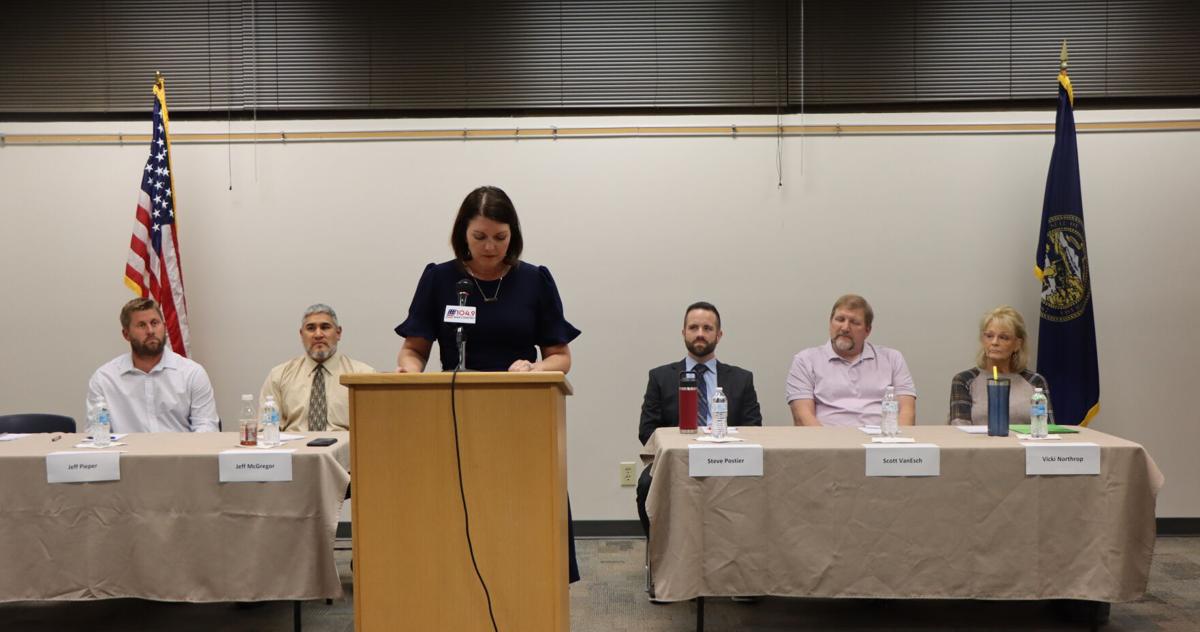The future of Smart Cities relies on Proptech and data: Forum – Commercial Observer

Metaverse is more than minecraft – with the potential to launch an innovative new era of commercial real estate. At Commercial Observer’s latest proptech forum last week, “Interactive Cities and the Metaverse: Enabling Real Estate Transformations,” industry experts discussed how technology can redefine user experiences in environments urban, whether in the office, in a store or in the big city.
The April 12 event – held virtually, appropriately enough – was the first in CO’s “Proptech Insider Live” series, which will outline market changes affecting and contributing to the rapid growth of proptech.
Josh Schustergeneral manager of Development of the silverback, hosted the first panel, aptly titled “Welcome to the Metaverse.” He spoke alongside André KiguelCEO of a blockchain technology company Tokens.com; Jeffrey Bermangeneral partner of a venture capital company Camber Creek; and Michael Phillipsdirector and president of an investment and property company jamestown. They reviewed opportunities for the metaverse to facilitate new avenues of engagement and convenience.
“The Metaverse is a 3D virtual world that you access through your browser”, Kiguel said.
He noted that the metaverse has evolved beyond games and social media into an all-encompassing digital sphere. Over the past year, the Metaverse has become a hot topic of conversation, thanks to a combination of Facebookis renamed Meta and the pandemic; COVID-19 has expanded non-traditional means of socialization and communication, made possible by technological devices. Likewise, the use of blockchain technology and NFTs has created self-sustaining digital economies.
This upheaval in the metaverse has the potential to drive efficiencies in commercial real estate.
“Brick-and-mortar fundamentals are similar to digital fundamentals,” Phillips said. “It’s about talking to a constituency, creating an engagement model and a product or service that people want to consume.”
As for retail, the metaverse has already begun to prove its worth. In March, the Web3 metaverse Decentralized hosted Metaverse Fashion Week, which attracted 100,000 unique visitors over a two-day period. Kiguel noted that more than 60 designers made an appearance, while the average time visitors spent in forever 21, which filed for bankruptcy in 2019, was 27 minutes. This stat presents a positive view of how consumers can interact with fashion in a booming 3D digital world.
Such changes have already yielded short-term results, although their long-term potential is even greater, as implementation is still in its early stages. Currently, access to the metaverse is not yet frictionless. Participation requires clunky headphones for full immersion, creating what Berman saw as a case of hype exceeding usefulness. He noted that he is currently evaluating how best to use technology to address commercial real estate challenges, such as encouraging tenant traffic in offices.
As the metaverse finds its place, data collection is key in the meantime – a sentiment underscored by the experts on the following panel. Philip Russowho writes Commercial Observer’s PropTech Insider newsletter, moderated “Advocating for Proptech Investments through Property Valuations and Data-Driven Investments,” which featured Nikki GreenbergHead of Technology, Strategy and Digital Management at CIQ Real Estate; Lauren Mead, vice president of marketing at proptech company HqO; and jenny wang, a general manager at property owner and developer Tishman Speyer.
Collecting data can elucidate what tenants want and what they use, Mead said. Businesses can determine which investments are worth making by first evaluating which amenities will increase occupancy, maximize rental, retain tenants, and more. Data analysis enables informed investments and can minimize the likelihood of sunk cost.
However, the implementation of new technologies is not only about digital. Progressing in proptech not only requires physical changes, but also an evolution of mindsets, Greenberg said. Experienced real estate professionals may not be used to the digital canon, which is only just beginning to gain traction. Adapting to and adopting the latest technologies requires new vocabulary and can come with a steep learning curve.
However, no matter how difficult, installing new technology always takes less time than getting a building off the ground. As commercial real estate depends on high-quality spaces, the digital experience must match the physical experience in standard and strength, Greenberg said. Strategizing before executing is therefore essential.
When brought together, these technologies can eventually produce smart cities, which the event’s third and final panel discussed. In “Smart Cities & the Emergence of Innovation Districts”, CO’s Tom Acitelli moderated a conversation with Aaron Brondumvice president of customer success at a software company Prescriptive data; Todd Burnerproduct manager at security company Castle systems; Vardahn Chaudhryvice president of smart cities and digital infrastructure at developer JBG Smith; Jason Clarkexecutive director of nonprofit technology Technology: NYC; and Tracy Sayegh Gabrielpresident and executive director of Northern Virginia’s National Landing Business Improvement District.
Sayegh Gabriel defined a smart city as an urban neighborhood with technology, transportation, and infrastructure that enables collaboration and invention. This type of city uses digital resources to enhance the physical experience, allowing people to engage with their surroundings in productive and communal ways.
This theme of connectivity resonated throughout the panel, as panelists agreed that merging the digital with the physical can create a synchronous environment for users. People don’t move because of technology, Sayegh Gabriel explained, but technology can make a place more exciting, integrated and seamless. She and Chaudhry cited National Landing as an infrastructure-focused environment in the DC area that will soon connect — even on foot — with Ronald Reagan Washington National Airport.
Collecting data can allow places like National Landing to keep renters safe as well. If developers understand traffic patterns at a specific time of day, for example, they can then work to make crossings at intersections safer.
From an energetic perspective, data collection also has life-changing potential. Using video cameras and IoT sensors, office owners can understand how and when their tenants are using a given asset. Such knowledge can adjust heating, cooling and lighting resources.
“That data that already exists in the building can be mined, collated and used to generate some pretty significant ESG-related results,” Burner said of the increasingly important environmental, social and governance standards for investors. real estate and tenants.
Yet collecting this information requires trust between users and the technologies at play. A connected urban environment depends on access to 5G, private networks and private spectrum, but the community must first buy the city smart, Clark and Chaudhry said. Clark noted that although the pandemic has accelerated technological opportunities, trust is an asset that cannot be accelerated. The community must understand and become familiar with the logistics of a smart city, while those driving new technologies must assure users that their privacy will not be compromised.
Yet even with technology ready to go, the future may be further away than we think.
Collaboration is an outcome of smart cities, but also a necessary input, which comes with a lag. According to Prescriptive Data’s Brondum, the biggest obstacle to smart cities is getting separate entities and organizations to work together toward a common goal. Balancing multiple motivations, stakeholders, personalities and desires requires deliberate thought and planning, with the potential to create an urban environment with lasting impact.
“Let’s not create smart cities for the sake of smart cities,” Brondum said. “Let’s do this to solve a real problem.”
Anna Staropoli can be contacted at astaropoli@commercialobserver.com.






